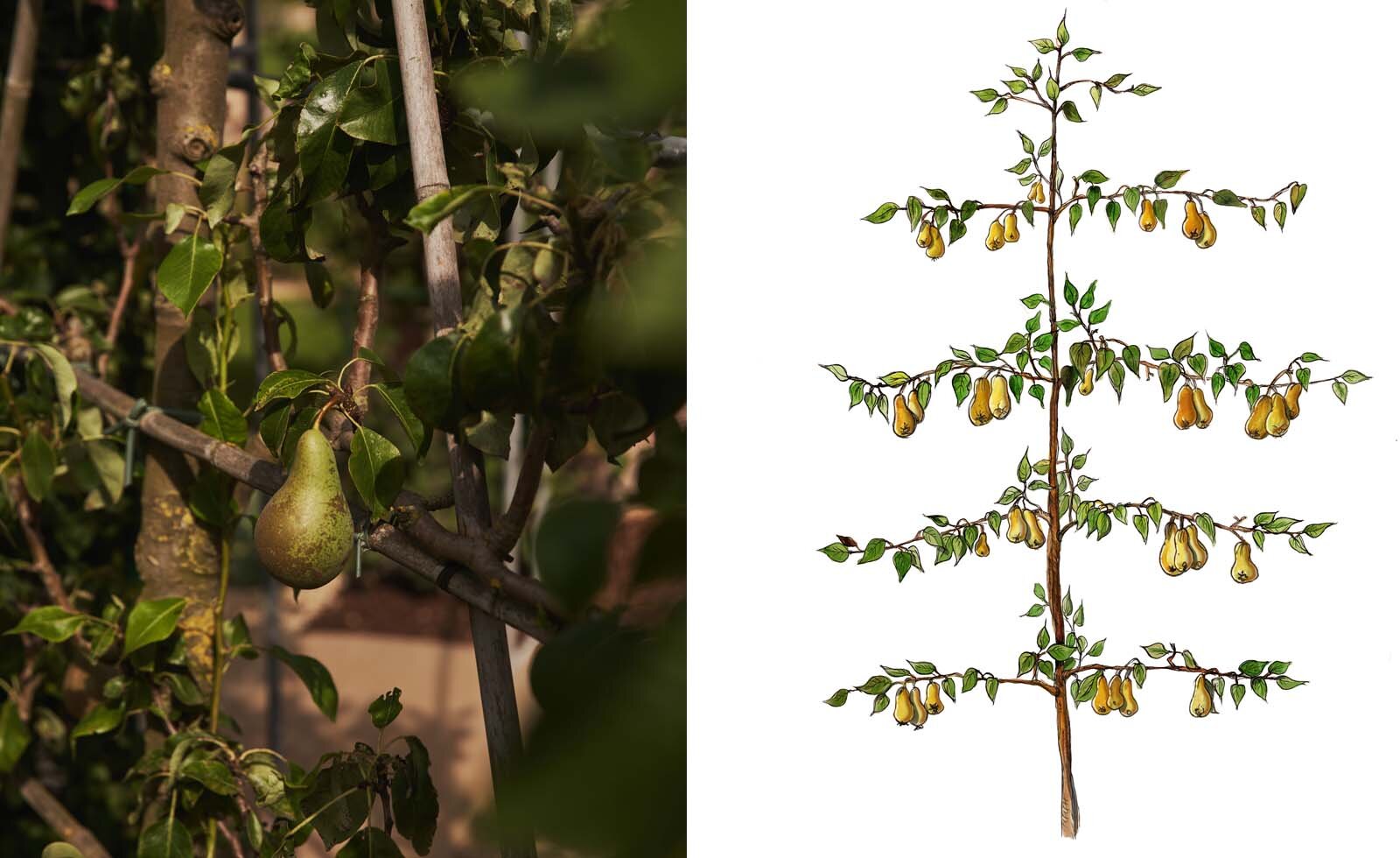THE ESPALIERED PEAR
HOW TO GROW & THREE DELICIOUS RECIPES
At Thyme we have several varieties of pear all of which are bearing beautiful fruit, perfect to pick right now for juices, preserving and dishes both savoury and sweet on our October menus. The best way to grow pears, especially if you have a small garden or need an unsightly wall or fence covering, is by the ‘espalier method’, this means tying the branches to wires, horizontally in layers.
The term ‘espalier’ comes from the Italian word spalliera which means something to rest your shoulder (spalla) against, a technique of training fruit trees pioneered by the Romans, and which was taken up all over Europe soon after. These early fruit growers realised that by restricting the dominance of vertical growth and intensely pruning, the flow of sap was slowed to the vertical branch, invigorating the short lateral fruit-bearing spurs – the result a much better crop than on ordinary trees.
Espalier trees can be bought from specialist fruit growers, pre-trained to give you a great head start. The key to creating a successful espalier, be it a pear or an apple, is to choose a good variety which bears fruit on spurs. Once planted you will need to grow your tree on a very sturdy framework of wires which need to support the weight of the branches and the fruit. Tie the branches along the wires and once you reach your allotted space remove the growing tip and then the spurs along the branch will develop, these spurs are where the flowers and fruit will form. It is important to give these spurs enough space and they will need to be thinned after a few years as pears tend to grow overcrowded spurs. Espalier trees need to have the current year’s growth reduced in the first week of July to two buds, this enables light and air to flow around the branches to help reduce fungal infections and to allow light to reach the fruit and help it ripen. In winter it is time to do the spur thinning and remove any of the three D’s … dead, dying or diseased wood, from your tree and keep it in that horizontal layered shape.
It is easier than you might think to utilise nature to its best, to create a fantastic ornamental focal point in your garden, which can produce an abundance of fruit in a very small space with the minimum of effort.
Pear varieties that we love, and that lend themselves well to being trained into espaliers, are: ‘Beth’, ‘Conference’ and ‘Doyenne du Comice’. All three of these varieties produce sweet juicy pears in abundance this time of year. When you are next at Thyme, do take the time to admire our espalier pears that frame our reception and on our the new Ox Barn terrace, they are laden with fruit right now. The beautiful painting of an espaliered pear by Caryn Hibbert (Thyme's Founder) forms the structure for our new breakfast menu.
Recipe from The Swan: Pear, Blue Cheese & Cavolo Nero Salad


